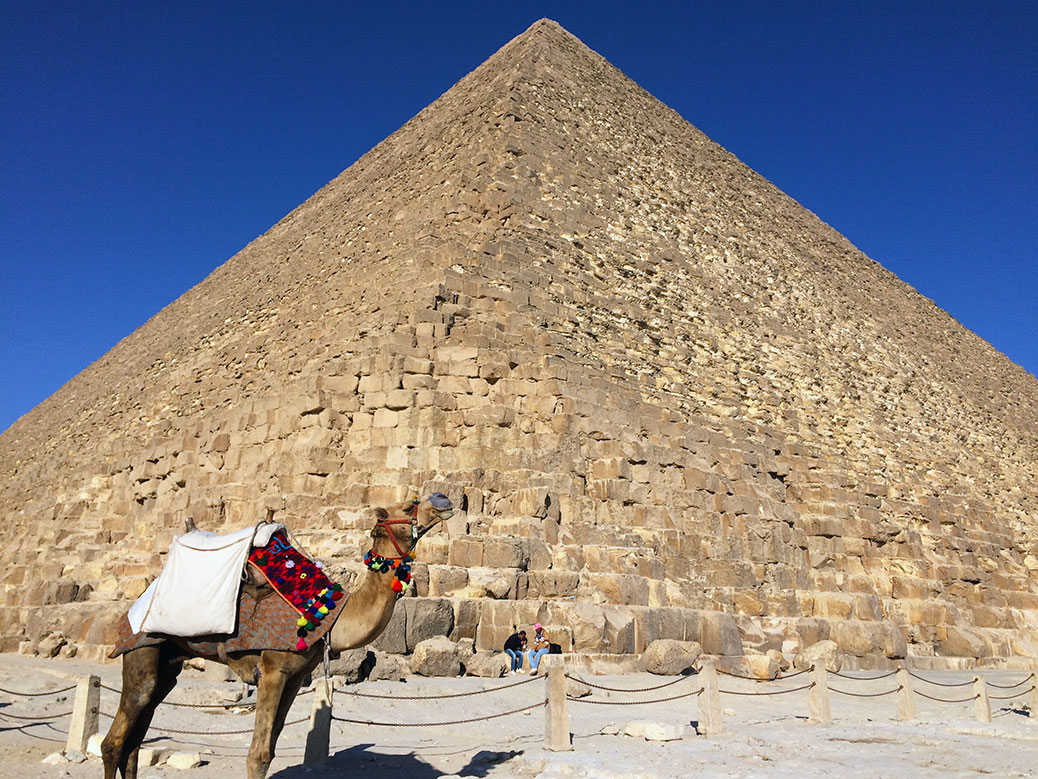To see something in person that you’ve only seen in photos can be a surreal experience, especially something as iconic as the Great Pyramid of Giza. The last remaining Wonder of the Ancient World rises like a mountain from the flat desert west of the Nile River. The glimpses caught through the tall apartment buildings that clutter the modern skyline are just a tease of the main attraction.
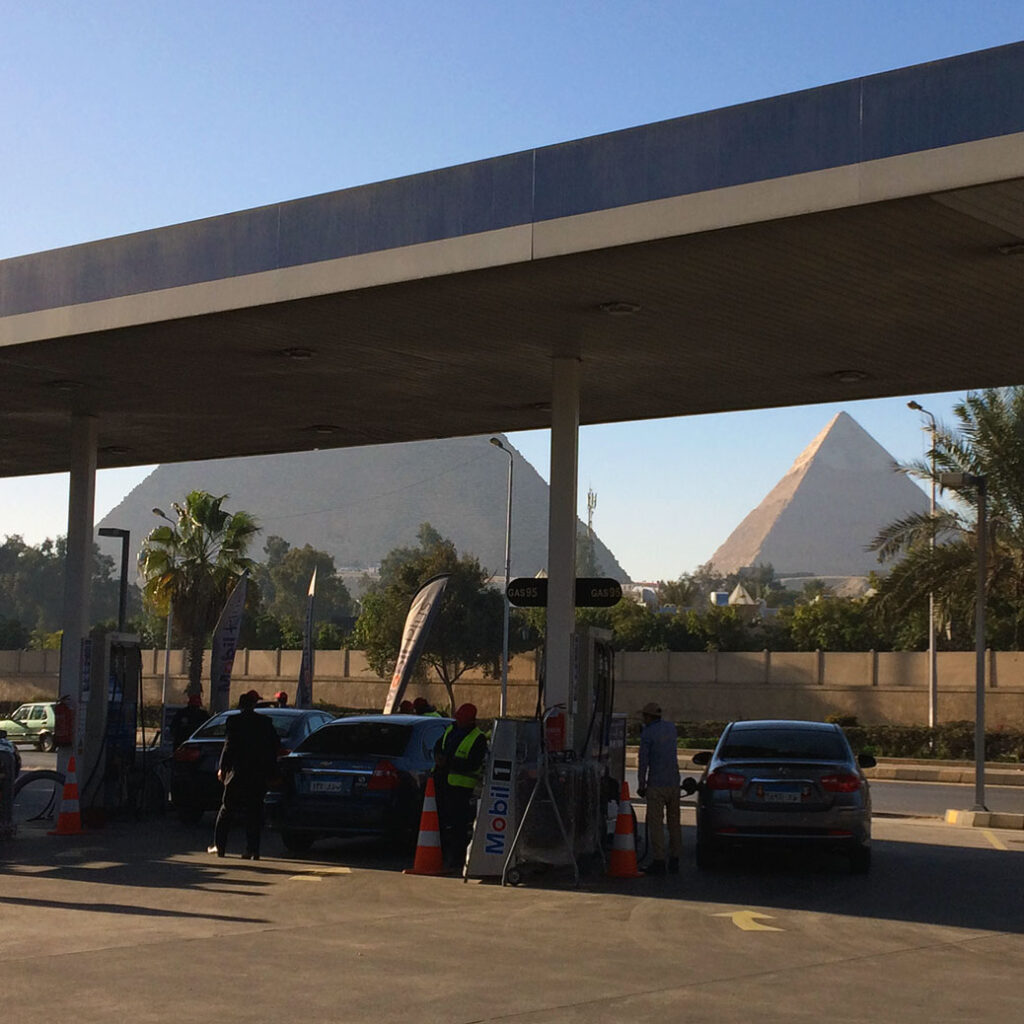
As we drove from Cairo toward Giza, it struck me how much the city encroaches on the plateau. The pyramids are typically photographed toward the west with the desert in the background. But just across the highway, the city has a front row seat to Ancient Egypt. So perhaps it’s fitting the roof of the On The Run gas station obstructed my first up-close view of the Pyramids.

Only a moment later, we left modern-day Egypt behind. From a distance, the pyramids are smooth, three-dimensional triangles, but up-close, you get a sense of how they were born. More than 2 million stone blocks, each weighing more than two tons create a craggy surface. Once covered in white sandstone—some of which can still be seen atop the middle pyramid—the exposed core tells a story of the construction.
Thought to have been built by slaves, it’s now known that the pyramids were built by skilled laborers, revered and honored for their work in the form of statues found during excavations. Construction techniques still used today were applied here in 2500 B.C. Stones sit flush with perfectly-flat surfaces. Corner joints allow for heat expansion and movement during earthquakes.

Pharaoh Khufu commissioned the three main pyramids of the Giza Pyramid Complex in the 26th century B.C. The Great Pyramid, the largest structure on Earth until the 1300s, is built in his honor. The middle pyramid—which appears largest because of its higher perch—is named for Khufu’s son and successor Khafre. The third and smallest pyramid belongs to Khafre’s son and successor, Menkaura.
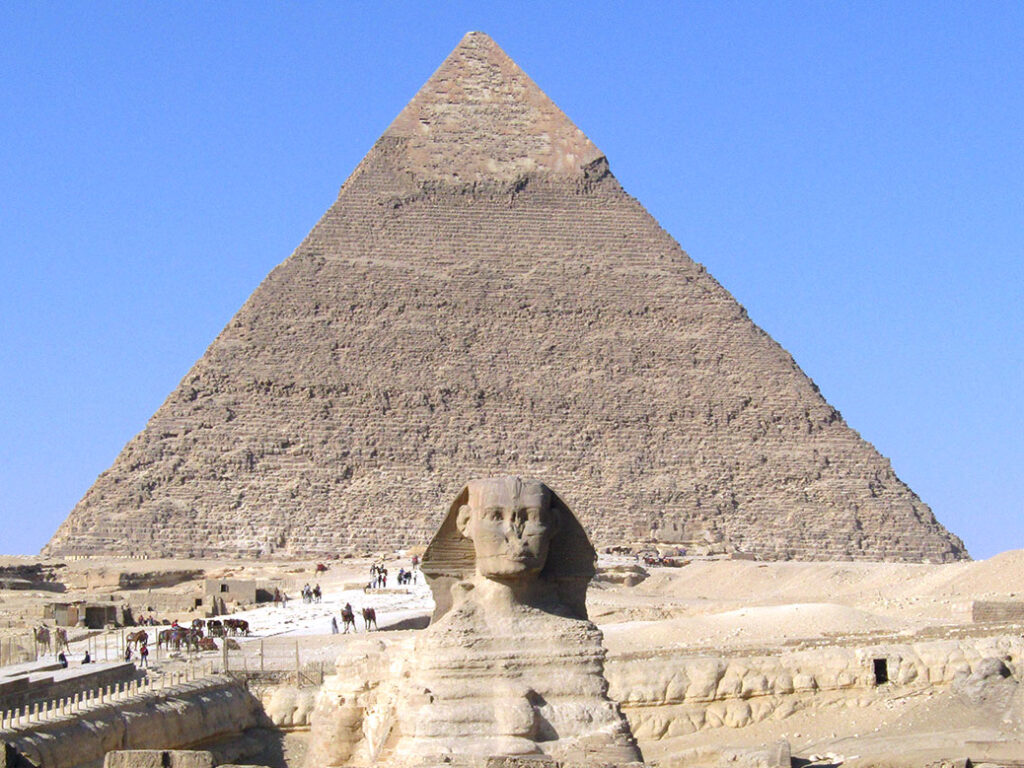
The Great Sphinx is part of Khafre’s pyramid complex. With the body of a lion and a head believed to depict Khafre, workers carved the famous statue out of the limestone from the quarry used to build the pyramids.
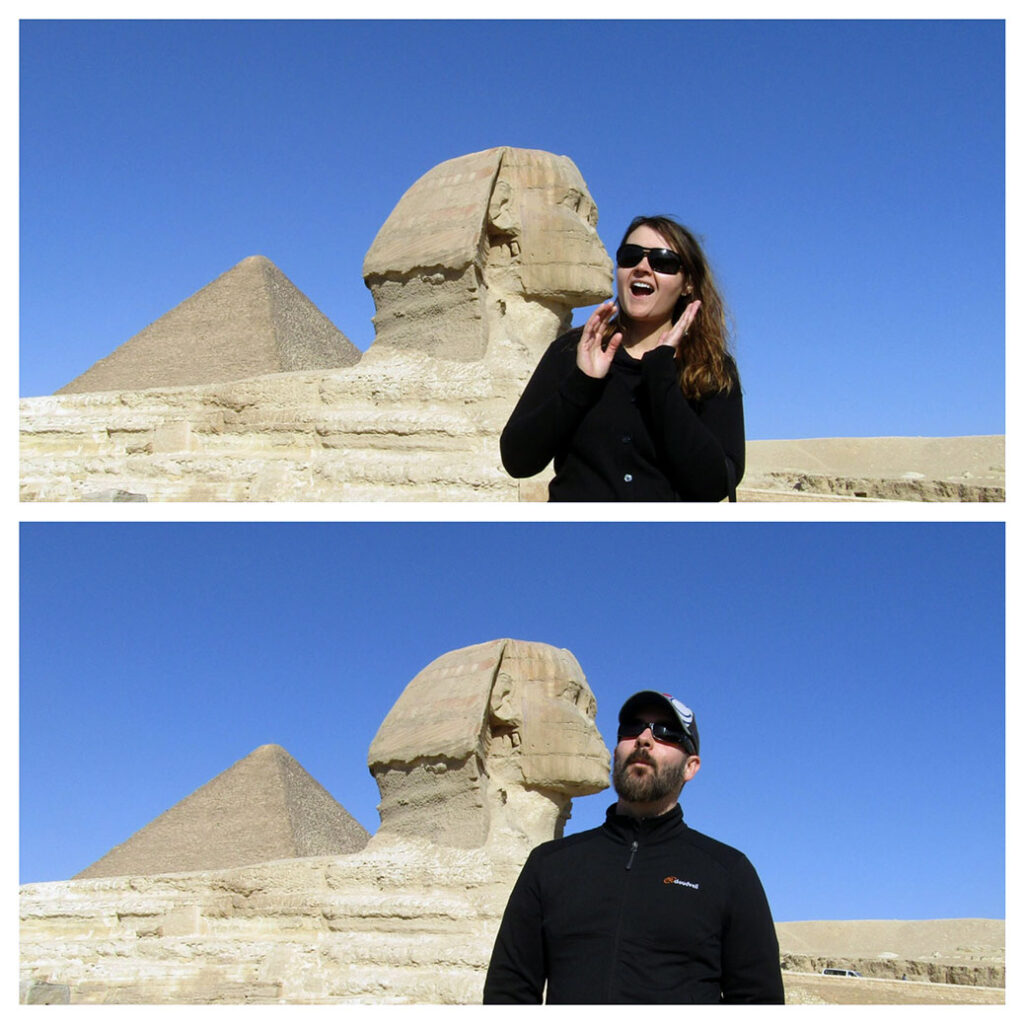
On the south side of the Sphinx, tourists gathered above the temple to pose for a variety of photos. The statue’s slightly puckered lips beg for a kissing photo. Not unlike Italy’s Leaning Tower of Pisa, part of the fun is watching visitors contort for the perfect picture.
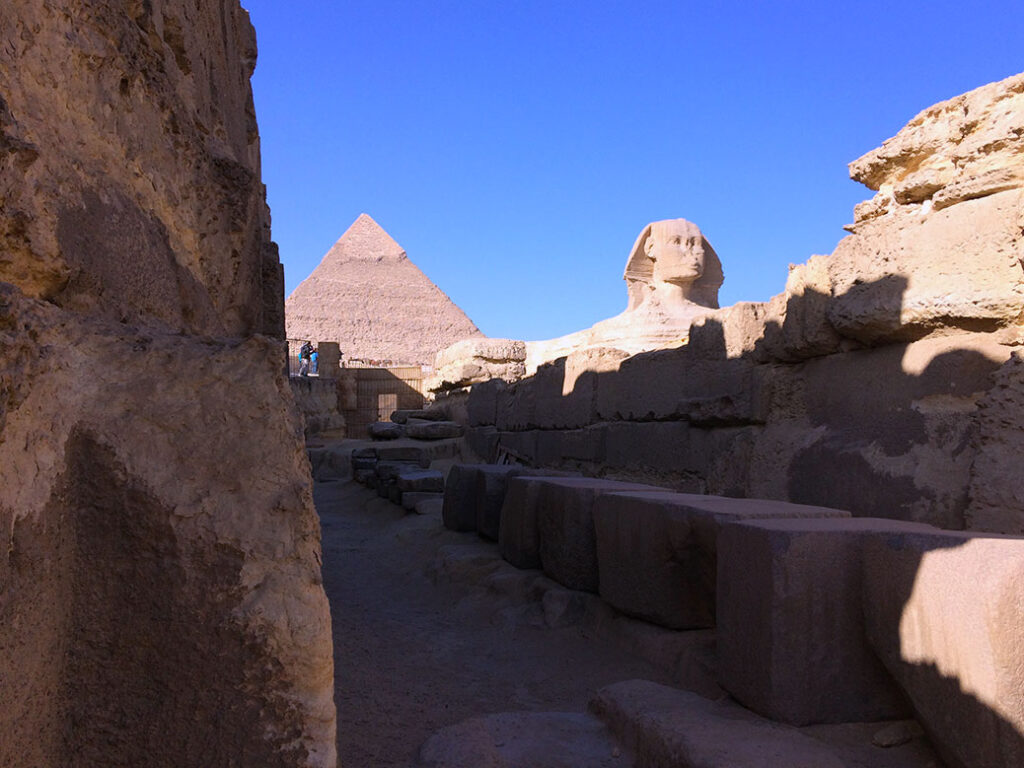
Mohammed from Emo Tours served as our guide and site historian. He led us into the one of the sparsely populated temples where we caught a view of the Great Sphinx from below. With no other tourists around, it was a moment of solitude to really take in the experience.
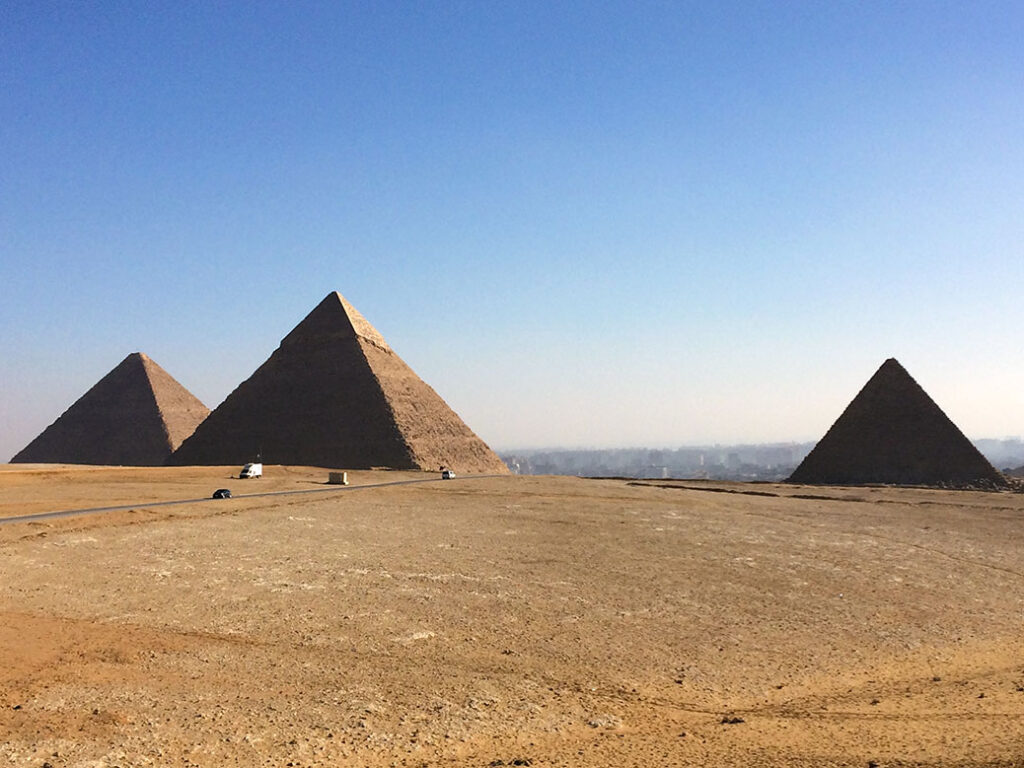
We ended our visit at a northwestern viewpoint, looking back toward the pyramids with Cairo in the background. The blend of the ancient and modern worlds made me wonder what the pharaohs would think of all this? Did they ever imagine visitors from far away lands making a pilgrimage to this place? Or that their legacy would outlive nearly everything else from their time, to tell their story for generations to come?
If You Go
Emo Tours
Guided tours of Egypt’s top sightseeing locations and highly-rated on TripAdvisor.

